Google makes some of the best tech products in the world, and that includes smartphones. With the release of the Google Pixel 6 Pro in October 2021, the tech giant has put its best foot forward and has produced a phone that’s bigger and better than the ones that came before it. But can it go head-to-head with industry-leading flagship handsets?
In this review, we take a look at the Google Pixel 6 Pro’s key features and examine if it’s the best flagship phone you can get right now.
Also read: Google Pixel 5 Review: Features, Prices, and Specs
Inside This Article
- Google Pixel 6 Pro at a Glance
- Price and Date Launched
- Form Factor and Build Quality
- Display
- Performance
- Software
- Camera
- Battery and Charging
- What Users Love and Hate About the Google Pixel 6 Pro
- Verdict: Is Google Pixel 6 Pro the Best Value Flagship Phone?
Google Pixel 6 Pro at a Glance
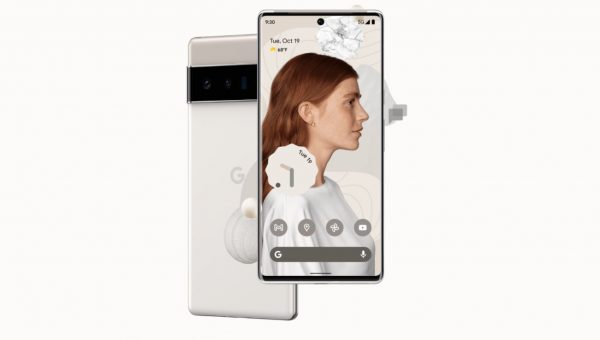
| Original Price | Starts at 899 USD |
| Processors | Google Tensor (5 nanometers), Titan M2™ security coprocessor |
| Operating System | Android 12 |
| Display | 1440 x 3120 LTPO AMOLED, 19.5:9 ratio; 6.7-inch 120Hz QHD+ |
| Battery | 5003mAh Li-ion, non-removable |
| Cameras | 11.1MP, f/2.2 (front); 50MP, f/1.85 (wide); 12MP, f/2.2 (ultrawide); 48MP, f/3.5 (telephoto) |
The Google Pixel 6 Pro is the tech giant’s best Pixel phone yet. It’s a serious competitor against other high-end smartphones, like the iPhone 13 Pro Max and the Samsung Galaxy S21 Ultra. The best part is that it only costs 899 USD, which is considerably cheaper than other thousand-dollar flagship phones.
The Pixel 6 Pro is packed with the best and the latest tech from Google. One remarkable addition to this Pixel phone is Tensor, Google’s all-new, custom-built silicon. It’s specifically designed for AI and machine learning, so you can expect a smarter and more personalized experience with this smartphone.
Google has also upped its camera setup game with its latest handset, packing in a 50MP wide lens, a 48MP telephoto lens, a 12MP ultrawide shooter, and an 11.1MP front camera all into the phone. Plus, it comes with a big and dynamic 120Hz display, which makes for a smoother experience when streaming videos and gaming. Google has also introduced a striking new look with the release of the Pixel 6 Pro, although, admittedly, it’s something you’ll either hate or love.
Where the Pixel 6 Pro falls short is its battery life. It’s decent, but it’s not as good as other top-end Android phones. Fully charged, it’ll last around eight hours with mixed use. It does have support for Qi wireless charging and fast charging, but these are also just passable.
Google Pixel 6 Pro: Price and Date Launched
The Google Pixel 6 Pro is a couple of hundred dollars more expensive than the 600 USD Google Pixel 6. The cheapest Pixel 6 Pro model, which has 128 GB of storage, retails for 899 USD. The ones with 256 and 512GB of storage cost 999 USD and 1,099 USD, respectively.
However, compared to other high-end flagship phones, the Google Pixel 6 Pro is undoubtedly the better choice if we’re looking at the price tag alone. The price of the Samsung Galaxy S21 Ultra, for example, starts at almost 1,200 USD, while the iPhone 13 Pro Max’s price starts at 1,099 USD.
Google is also offering customers the option to get Pixel 6 Pro with Pixel Pass. The price of the subscription starts at 55 USD per month for a total of 24 months. The plan provides you with upgrades for your Pixel phone every two years, device care, Google One, YouTube Premium, YouTube Music Premium, and Google Play Pass. In total, you’ll be able to save up to 294 USD more than if you were to buy a Google Pixel 6 Pro and a Pixel Pass separately.
The Google Pixel 6 Pro was released on October 28, 2021, and has since been available in major retail stores. You can purchase one from the Google Store and Amazon, as well as from mobile carrier stores like AT&T, Verizon, T-Mobile, Xfinity Mobile, and Google Fi.
Form Factor and Build Quality

Perhaps the most remarkable aspect of the Google Pixel 6 Pro’s design is the camera bar across the rear. It protrudes from the back and can be something you either hate or love. On the one hand, it makes the phone look strikingly different from the phones you see nowadays. Plus, this camera bar gives the Pixel 6 Pro some stability, preventing it from rocking when you lay it on a table to type or play games. On the other hand, it is an acquired taste, and your phone will sit at a bit of an incline when you lay it on its back.
The Google Pixel 6 Pro comes in three colors: the unconventional Sorta Sunny, and classics Stormy Black and Cloudy White. The front and back are both made of glass, and the frame is made of 100% recycled aluminum. These two elements together give the phone a much more premium feel than the design of the Google Pixel 5, which has a matte, rubberized finish.
With dimensions of 6.5 x 3.0 inches, the Pixel 6 Pro is Google’s largest phone by far. But despite its size, it’s still a lot lighter than the iPhone 13 Pro Max, which weighs 240g. Plus, it has curved edges, allowing you to hold the phone comfortably. Although some users have found that these also make the phone slippery, you can easily rectify that by buying a case for your Google Pixel 6 Pro.
This phone also comes with IP68 protection, making it dust- and water-resistant. However, that doesn’t mean you should take it swimming every chance you get. That just means it can withstand having a glass of water spilled on it occasionally. Plus, it’s scratch-resistant, thanks to Corning Gorilla Glass Victus technology protecting its glass rear.
Google Pixel 6 Pro: Display
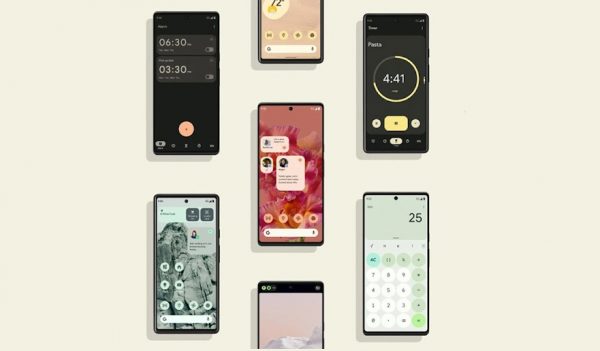
The Google Pixel 6 Pro’s display is the largest among Pixel phones to date, coming in at 6.7 inches. And thanks to its 1440 x 3120 resolution, it also provides you with crystal clear picture quality on top of a large display. This is definitely a big leap forward from the Google Pixel 5, which only sports a 1080 x 2340 screen resolution. What also adds to the Pixel 6 Pro’s superb picture quality is its pixel density of 512 ppi (or pixels per inch), giving you incredibly pin-sharp graphics with great color saturation and high color accuracy. This makes it excellent for watching movies and videos and playing games with vibrant colors, such as Genshin Impact.
Complementing the Google Pixel 6 Pro’s crisp display quality is its ultrafast refresh rate of 120Hz. This means its screen can refresh twice as fast as standard smartphones, whose refresh rate can mostly only go up to 60Hz. This makes for a smoother experience when you’re scrolling through your phone or gaming. However, this doesn’t mean that the Pixel 6 Pro’s refresh rate is always at 120Hz. It only ramps up to that number when it needs to, like when you’re playing mobile games or watching videos. Other times, like when your phone is running low on battery, the refresh rate can decrease to 10Hz.
Where the Google Pixel 6 Pro’s display falls a bit short is its brightness. It’s not as dim as previous Pixel phones have been, but its peak brightness, especially when you’re outdoors, can’t match that of some of its competitors, like the iPhone 13 Max Pro. You’ll sometimes have to manually adjust the brightness to see your screen more clearly instead of relying on auto-brightness.
Google Pixel 6 Pro: Performance

The Google Pixel 6 Pro uses Google Tensor, its first in-house silicon. But just because it’s new to the game doesn’t mean it’s any less impressive. In fact, you won’t even notice that it’s not running on the usual Qualcomm Snapdragon chipsets. The Tensor-run Pixel 6 Pro is just as powerful and performs just as smoothly as other high-end Android phones.
That said, the Pixel 6 Pro’s benchmark scores aren’t as high as those of its competitors. On the Geekbench 5 multi-core processor test, it only scored an average of 2760. That’s significantly lower than the Galaxy S21 Ultra and iPhone 13 Pro Max, which scored 3440 and 4549, respectively, on the same benchmark test.
However, Pixel 6 Pro’s benchmark scores aren’t any indication that its chipset performs poorly; it just means that it’s not setting a new benchmark for high performance in phones. Despite that, the phone is perfectly capable of running all sorts of demanding apps and video games like Call of Duty: Mobile and Infinity Blade 3. Plus, it lets you edit photos and stream videos as smoothly as you would hope.
The Google Pixel 6 Pro is 5G-ready. However, if you’re in the US, whether you’re able to connect to 5G networks and the type of 5G coverage you get depend largely on your plan and where you got your phone. For instance, if you purchase from Verizon or AT&T, you’ll get a Pixel 6 Pro that comes with mmWave 5G, which, as of writing, is the more prevalent 5G coverage in the US. But if you buy a Pixel 6 Pro from the Google Store, you’ll be given a version that has sub-6 5G built in.
Software
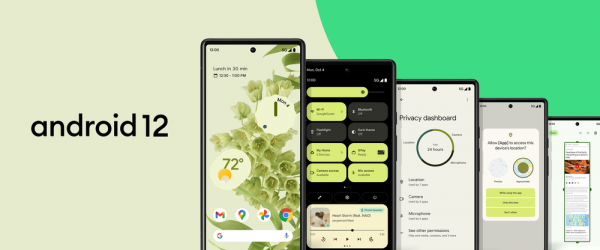
The Google Pixel 6 Pro runs on Android 12 and is one of the first few smartphones to debut with the latest version of Android. This phone with this OS is a perfect combination, as the Pixel 6 Pro’s stunning display allows Android 12’s updates and new features to shine through. One of the most remarkable features of Android 12 is Material You, which, as of writing, is exclusive to the Google Pixel 6 and the Pixel 6 Pro. Material You lets you personalize your phone on a whole new level. With this feature, your phone automatically picks an accent color for your menus and apps based on the dominant color of your wallpaper.
Besides having a more customizable theming system, the Pixel 6 Pro also comes with tighter security. It will get at least five years’ worth of security updates, so you can use this handset till the end of 2026 (or beyond) without worrying about security risks. Android 12 also grants you more control over your privacy and security settings. One of the ways it does so is through the privacy dashboard, which shows you the information of apps you have used recently. Plus, it includes buttons in the notification panel that allow you to disable system-wide access to your mic and camera.
With Google Pixel 6 Pro, you’ll be able to appreciate Android 12 more. For instance, Google Assistant on the Pixel 6 Pro allows you to compose texts, insert emojis, and send messages with your voice accurately. Plus, it has support for quick phrases for things like turning off your alarm or rejecting incoming calls. It’s also a great call assistant, as it now gives you wait time estimates as well as transcripts and recordings for screened calls.
Google Pixel 6 Pro: Camera
Pixel phones have some of the most powerful cameras in the market, and the Pixel 6 Pro is no exception, especially with Tensor being built for computational photography. Its camera setup is the best Google has come up with so far, with a 50MP main camera, 48MP telephoto lens, and a 12MP ultrawide shooter. To add to that, the phone’s native camera app has some pretty nifty features and modes as well, which we’ll get into later.
Lenses
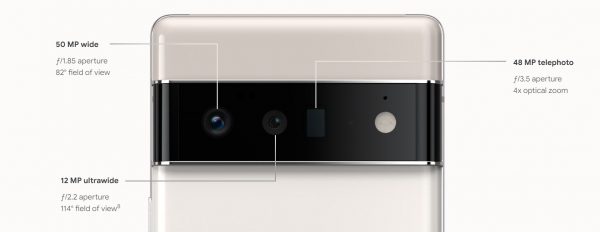
The 50MP wide lens is what you’ll probably be using the most. It’s capable of delivering sharp, high-res photos with natural-looking colors in pretty much any scenario. If you want to be able to zoom in on a subject from a considerable distance, the telephoto camera will give you the best results. It can do 4x optical zoom while keeping photo quality great. But, of course, you’ll need to steady your phone for the best photo. With digital zoom, on the other hand, you can zoom in on a subject up to 20 times. However, you’ll notice a significant dip in quality if you use this, even with the help of the AI-powered Super Res Zoom.
If you want to fit more subjects in a single shot, you can use the ultrawide lens, which has a field of view of 114 degrees. However, since it has a significantly lower MP than the main camera, the photos you’ll be able to take with it won’t be as stunning. Thus, you’re better off sticking with the 50MP wide camera, unless the situation requires a different lens.
If you want to take selfies, the Pixel 6 Pro’s 11.1MP front camera can help you with that. It lets you shoot 4K videos as well.
Camera Software

The built-in camera app has a few camera modes and features that are worth discussing as well. Making a comeback is Night Sight, which allows you to take good photos even when there isn’t much light. The quality of the pictures taken in this mode isn’t of the highest quality. That said, it captures low-light scenes decently and makes them look aptly bright without the photo being grainy.
Some new additions to the camera software are Motion mode and Real Tone. Motion mode is built for taking long exposure images of moving subjects, like a moving car or someone running a marathon. This enables you to take artful action shots with blurred backgrounds. Real Tone, on the other hand, allows you to capture skin tones as they are. This is especially great for taking portraits of people of color.
There’s also Magic Eraser, which lets you remove unwanted objects or photobombers from your photos by simply tapping on the object. It doesn’t do the job perfectly, though. Plus, there might still be some remnants of the unwanted object even after you’ve removed it. Nevertheless, it works fine if you only need to do a bit of cleaning on a photo. According to Google, the feature works best with photos taken at parks or on beaches.
Google Pixel 6 Pro: Battery and Charging
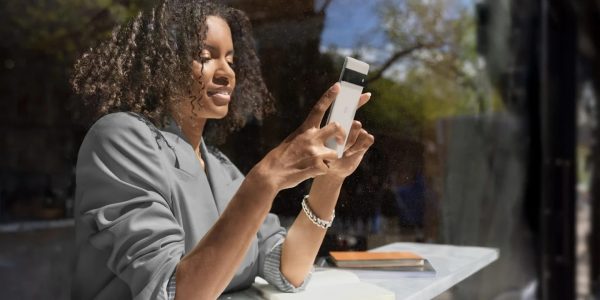
The Pixel 6 Pro boasts a whopping 5,003mAh power capacity. But despite that, battery life isn’t the phone’s strongest suit. The company claims that the phone’s battery life will last 24 hours. However, many have noticed that the Pixel 6 Pro’s battery usually taps out after around eight hours of mixed use. And if you push it even further by adding gaming and video streaming into the mix, you’ll run out of juice even before the day ends.
The gadget has an Extreme Battery Saver. In this mode, Google claims your phone’s battery can last up to 48 hours. Although this will definitely come in handy during emergency situations, you won’t really be able to do much with your phone in this mode. Of course, just like with any phone, you can make your Pixel 6 Pro last longer by turning off GPS, WiFi, Bluetooth, and mobile data when you don’t need them. Keeping your phone’s screen brightness low will also help.
You can charge this phone wirelessly using a Qi-certified charger. It has support for up to 23W if you’re using a Google Pixel Stand, and you’ll be able to get a full charge after about an hour and a half. However, it would take much longer if you’re using an EPP charger since these are only supported up to 12W.
The Pixel 6 Pro gets powered up quickly as well. That said, it doesn’t charge as fast as other Android handsets, as it only has support for up to 30W charging. The OnePlus 9 Pro, for instance, banners 65W fast charging and gets full in about 30 minutes. On the other hand, the Pixel 6 Pro takes an hour to get to 100% with fast charging.
What Users Love or Hate About the Google Pixel 6 Pro
The Google Pixel 6 Pro looks promising so far. However, just like with any other phone, there are things to love and things to hate about it. We summarize the most important ones for you in this table:
What we love
- More affordable than other high-end flagship handsets
- Outstanding cameras
- Wide and clear display
- Excellent picture quality
- User-friendly and snappy interface
What we don’t love
- Average battery life
- Fingerprints and smudges show up very easily on the glass back, especially if you get it in Stormy Black
- Slippery if you don’t use a case
- Slow in-display fingerprint sensor
Verdict: Is Google Pixel 6 Pro the Best Value Flagship Phone?
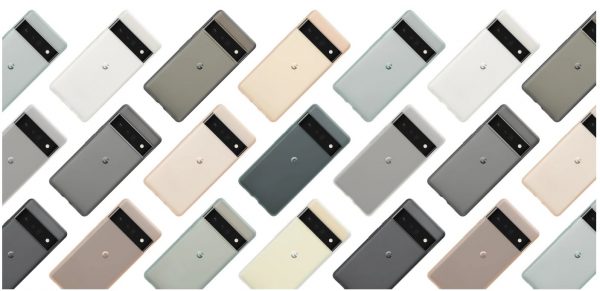
With everything it has to offer, we can say with confidence that the Google Pixel 6 Pro is the best value flagship phone that you can get right now. This smartphone is perfect for Android enthusiasts and iOS users who are looking to make the switch. With the custom-built Tensor chip, it can run even the most demanding of apps and mobile games without hiccups. Plus, it has a large dynamic display with crisp picture quality; this is perfect for gaming and watching movies on the go.
The only thing that might put you off from buying this smartphone is its passable battery life. A fully charged Pixel 6 Pro, on average, will last only around eight hours with moderate use. That said, you can make it last longer by using battery-saving techniques like turning off WiFi, data, GPS, and Bluetooth when not in use and keeping the screen brightness down.
Other than that, the Google Pixel 6 Pro is truly top-tier. It’s certainly among the best flagship phones that are available on the market, and it doesn’t cost a fortune.
